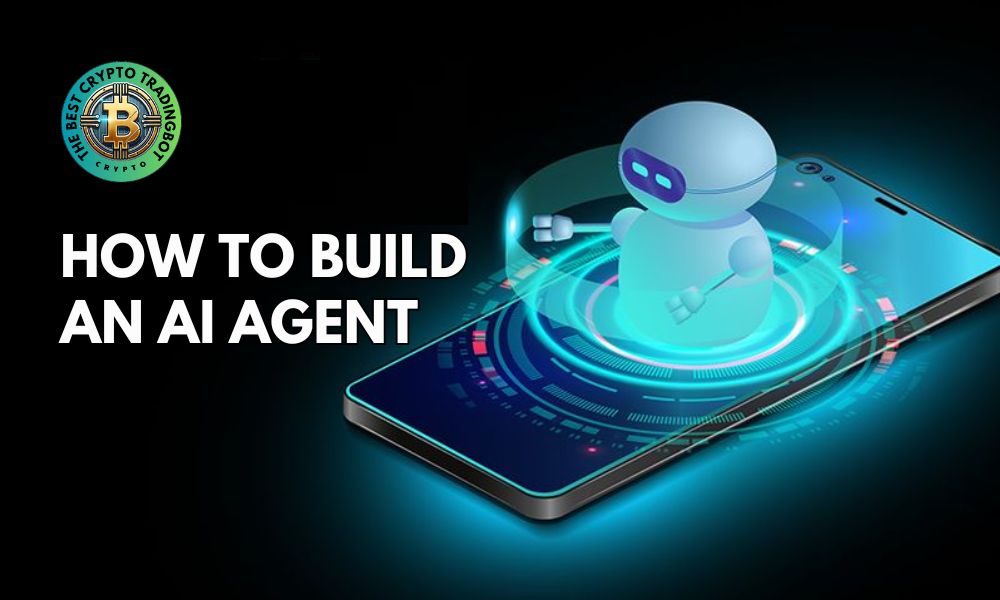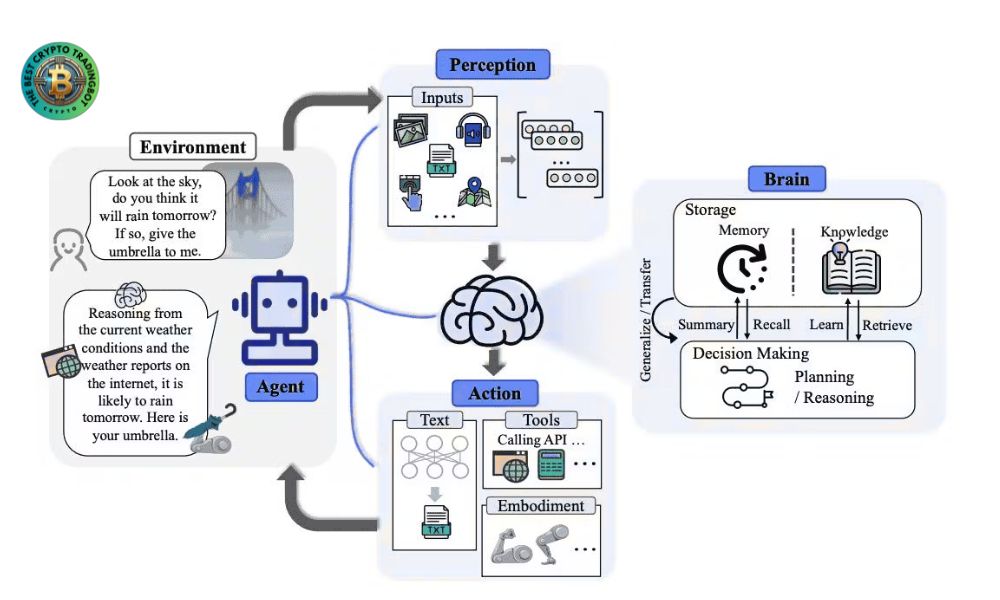How to build an AI agent is an increasingly popular topic in the tech industry. It’s no longer a distant concept but a structured process that can be learned. This article will guide you through 6 core steps, based on the most common architecture, so you can understand and begin building your very own artificial intelligence agent.

Introduction to AI agents
Before diving into the construction process, we need to understand what an AI agent is. Essentially, an AI agent is an autonomous entity capable of perceiving its environment, processing information, and taking actions to achieve a specific goal. Think of it as a digital “brain” that can interact with the world, from answering questions and searching for information to controlling physical devices.
In the diagram above, we see a classic example: a user asks a robot about the weather. The robot (the agent) not only listens but also “sees” the sky, accesses the internet for data, reasons, and finally provides an answer along with a specific action – handing over an umbrella. This process perfectly describes the operational lifecycle of an AI agent. Here is a detailed guide on how to build an AI agent step by step.
The 6 core steps to build an AI agent
Based on the model architecture, the process of building an AI agent can be broken down into six main steps.

Step 1: Define the environment and objective
This is the foundational first step. You cannot build an agent without knowing where it will operate and what it is supposed to do.
Environment: This is where the agent exists and interacts. The environment could be a website, a chat application, a computer’s operating system, or even the physical world (for embodied robots).
Objective: This is the specific task the agent needs to accomplish. Examples include answering customer queries, summarizing documents, scheduling appointments, or forecasting the weather.
Clearly defining these two factors will guide the entire development process that follows.
Step 2: Design the perception module
The agent needs to be able to “sense” its environment. This is where the perception module comes into play. It is responsible for collecting input data from the environment.
The types of inputs are diverse:
- Text: Messages from users, email content, documents.
- Image: Photos, video streams.
- Audio: Spoken words, sounds.
- Other data: GPS coordinates, temperature sensor readings, etc.
Once collected, this data must be converted into a format that the agent’s “brain” can understand, typically numerical vectors (embeddings). This is a crucial step in understanding how to build an AI agent capable of processing multimodal information.
Step 3: Build the central brain (core logic)
This is the most complex and critical component. The brain is responsible for processing information and making decisions. It usually consists of two main parts:
Storage:
- Memory: Stores short-term, contextual information, such as the recent conversation history. This helps the agent maintain continuity in dialogue.
- Knowledge: Stores long-term, structured information, like a database or a knowledge base. The agent can learn and retrieve information from here.
Decision Making: This is where planning and reasoning take place. The agent analyzes the user’s request, combines information from the perception module with its memory and knowledge, and decides on the next action. This is the heart of the process of how to build an AI agent.
Step 4: Develop the action module
After the brain has decided “what to do,” the action module executes that task. Actions can be categorized as follows:
- Text Generation: Replying to messages, writing emails, creating reports.
- Tool Use: Calling external APIs to fetch information (e.g., a weather API, a search API) or perform tasks (e.g., an email-sending API).
- Embodiment: If the agent is a robot, it can move, grasp objects, or perform other physical manipulations.
Understanding how these modules work is key to knowing how to build an AI agent that is effective.
Step 5: Integrate tools
An indispensable aspect when learning how to build an AI agent today is its ability to use tools. No single AI model can know everything, especially real-time information. By allowing the agent to call APIs, you infinitely expand its capabilities.
For example, an agent can:
- Access Google search to find the latest information.
- Use a calculator to perform complex math.
- Connect to your calendar to check for and create events.
Step 6: Create a feedback and improvement loop
An AI agent’s operation is a continuous loop: Perceive -> Think -> Act.
The agent’s action changes the environment, and this change is then perceived by the agent, starting a new cycle. This loop is vital for the agent to learn from the results of its actions, self-correct, and become smarter over time. Continuously testing and refining will help you complete the process of how to build an AI agent.
Hopefully, this article has provided a clear overview of how to build an AI agent. The process involves defining the environment, designing perception, building a brain, developing actions, and creating a continuous improvement loop. For the latest insights on AI and technology, be sure to follow The Best Crypto TradingBot.
